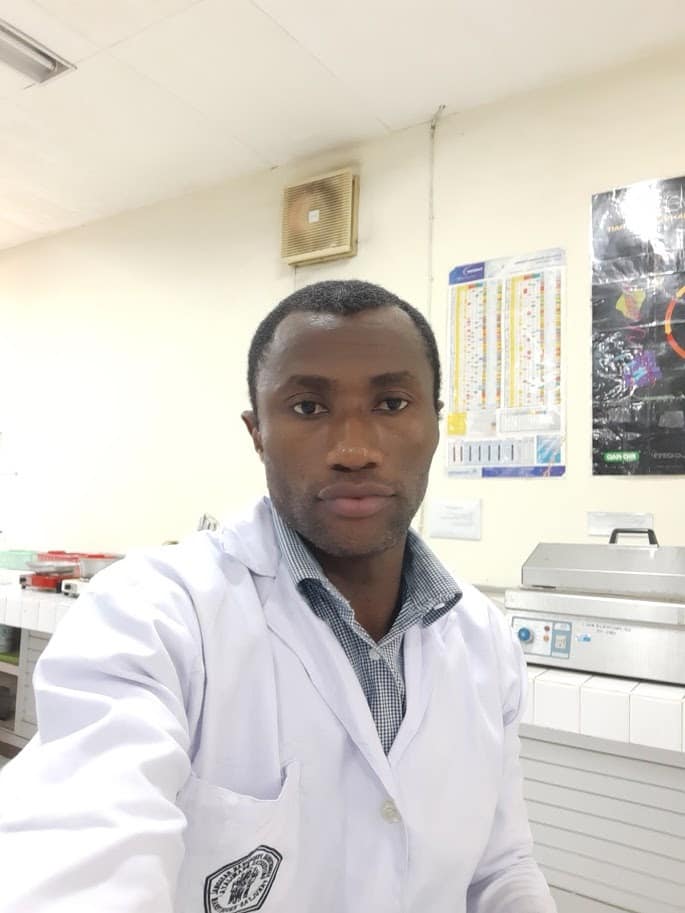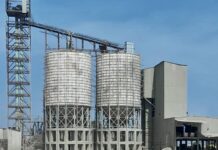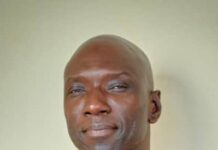By: Dr. Kebba S. Bojang
Kebba! Kebba! I heard Dr. Musa Marena, my roommate, shout my name with a degree of foreboding in his voice. I jumped from the bed; and realizing the building was swaying, I rushed towards the window in order to jump outside. I could not move straight as I was swinging from side to side as if drunken. This was early in the morning, and it was the earth quaking.
On this particular day, March 4th, the earth first quaked around 7.30 am while some of us, the students of the Kaohsiung Medical University, were in bed in our dormitory building in Kaohsiung City, Taiwan. It was the strongest ever shaking of the earth since I went to Taiwan. I had experienced 3 other earthquakes before; the last one of those occurring about 3 months prior. That one measured 2.7 on Richter’s scale, with its epicenter in the Taiwanese sea. The one that occurred on March 4th measured 6.4 on the Earthquake magnitude class, classified as ‘Strong’, with its epicenter in our city.
Earthquakes are classified in categories ranging from minor to great, depending on their magnitude using Earthquake magnitude class (EMC), with classes ranging from Minor (3 -3.9 magnitude), Light (4 – 4.9), Moderate (5 – 5.9), Strong (6 – 6.9), Major (7 – 7.9) to Great (8 or more ). The EMC classification is used globally to measure quakes larger than approximately 5, while the more numerous earthquakes smaller than magnitude 5 are reported using the Richter magnitude scale.
I was living on the 2nd floor of a 13-floor storey building when the earth quaked on this particular day. The building was shaking in a way never experienced before when I suddenly jumped up from the bed with the shout of Musa calling my name and started rushing towards the window in order to jump outside; I was, as if drunken, swinging from one side to another. I abandoned attempting to open the window when I saw Musa heading towards the door; so, I followed him. Outside on the corridor we met with other international students, including Dr. Sheikh Omar Bittaye, who like us were all in clothes they went to bed in. Dr. Bittaye’s room was riding opposite ours.
we rushed to the window at the far end of the corridor at which stood a local student. I told him “let’s go”, meaning to jump outside through the window, as I attempted to open the window to which he said “no, no” while making a ‘calm-down-gesture’ with his hands. Despite that Ivan De Leon, from South America, quickly opened the window from the other side. However, we all stood at the window looking outside, waiting for the shaking to stop, or the building to start collapsing to make the next move. On this particular day, even the students who were playing basketball at the Basketball Doom, one of the symbols of our university, had to stop for a while. Fortunately, the shaking stopped after some time and everything went back to ‘normal’.
I went back to bed to continue sleeping as I had gone to bed barely two hours prior to the earthquake. I was able to go back to bed and slept, as mentioned earlier, because, though initially terrifying, that was the fourth time of experiencing the earth quaking. The three previous ones were not followed by any unusual occurrences. The index one was terrifying as it was the strongest quake to be felt in Taiwan as of that time for the last eleven years. That was why the students playing in the Basketball Dome had to stop for a while; lectures happening at that time had to be stopped for some time. That usually does not happen as Taiwan being earthquake-prone, is part of the Pacific Ring of Fire. The country is frequently rattled by earthquakes most of which are minor and cause little or no damage. As a result, the people of the island have become used to the earth quaking. So, the earth quaking does not make them stop what it finds them doing. The first time I experienced the quake, I spoke to Modou Sowe (Zack), a native of Lamin Village in The Gambia, who had been living in our city for a very long time, and married to a Taiwanese lady with two beautiful Taiwanese-Gambian daughters. He told me he was in bed and sleeping when the earthquake occurred. When he woke up and realized it was the earth quaking, he just pulled the blanket over his face and continued sleeping. This is the level to which they ‘disrespect’ earthquakes. Well, they always say their buildings are earthquake resistant.
The Ring of Fire is an area where a large number of earthquakes and volcanic eruptions occur in the basin of the Pacific Ocean. It is a 40,000 km horseshoe shape area, sometimes called the circum-Pacific belt. It is in this area where about 90% of the world’s earthquakes and 81% of the world’s largest earthquakes occur. Other countries in the Ring include Chile, the United States, Japan, the Philippines, Indonesia, Peru, Papua New Guinea, Russia, etc.
The strongest quake before the 4th of March experienced in Taiwan occurred in September 1999. It was a 7.6-magnitude earthquake. It occurred in the middle of the country and killed more than 2,000 people. After the quake on the 4th of March, we were warned that there might be aftershocks in the next few days. However, we did not have to wait till the next day for the warning to become a reality.
The 4th of March quake as mentioned earlier was so strong that it was felt all over Taiwan; when I called Aminatta, my wife, in Taipei which is at the other end of the country, around 450km from Kaohsiung city; she told me of a similar experience as she was also awoken by the shaking of the building. Fortunately for her, she lived on the fifth floor of a 5-storey building while I live on the second floor of a 13-storey building. Fortunately for her as there was a story of a 12-storey building being reduced to 10 storeys during the massive 1999 earthquake. The first two storeys of this particular building were reported to be swallowed down into the ground.
Although there has been no report of people being killed, there was a report of a train being derailed with a number of people sustaining injuries and a fire in a clothing factory in Tainan, a city about an hour’s drive from the epicenter. There were also reports of the temblor causing power outages in Taipei, and the high-speed rail service being suspended.
Later that day, I had to go to City Bank which is about 10km away; and I had to use the MRT (Mass Rapid Transit) as my mean of transportation. The MRT is the Metro subway system. When I was leaving, I informed my Musa where I was heading in case there is another quake leading to the collapse of the underground train tunnels, so it would be known where my remains would be.
When I reached the station, I stood at the entrance to the underground station and looked around to see if I would notice any cracks. There were none. I prayed then stood on the escalator to take me down to the station. Everything looked normal. The train arrived as usual. I entered and reached my destination safely. At the bank, I found them using stand fans instead of the usual central air-conditioning system as it got damaged during the quake. My return journey to university was also uneventful.
Even though we were expecting a number of aftershocks to occur, the first one occurred earlier than expected. It hit around 4.20 pm; barely 12 hours after the first quake. And just like in the morning, we rushed to the same corridor window and waited. And like in the morning, the shaking eventually stopped without the building collapsing.
However, by the time the shaking of the aftershock stopped, our nerves had gotten the better of us; as we all started freaking out, so to speak, wishing we could do something about it or have someone to complain to. I said my heart can’t take this anymore, then added, “well there is no one to go to, to complain or go for comfort”. It is an earthquake, everybody to some extent is exposed to the same amount of risk. Then Stanislas Galbaud from Haiti, lamented, saying for him unlike us, who just had the fear of physical harm, the events also had an emotional component for him as they reminded him of the tragic and devastating quake that occurred in his country on January 12, 2010, Which was reported to have killed over 10 000 people. That was a 7.0 magnitude earthquake.
But then somehow, we joked about the best possible ways of jumping through the window. We talked about finding tents to go to and staying on the football pitch till things settle down. Unfortunately for us, though the football pitch is open ground, it has a car park and some offices underneath it. Nonetheless, a better option than staying in our rooms. We also talked about the ways to know whether the building is shaking or not. These included looking at the cord of the telephone on the wall or the window drapes whether they are shaking. Some of us talked about trying to see whether the bed is moving especially if you are on the bed. One might think of one feeling the building shaking. That is true but that may not be the best indicator sometimes especially if you can’t determine whether you are feeling dizzy or not. I had the same experience 3 months ago the last time there was an earthquake prior to the index one. On that occasion, I just entered the room from outside and sat down at my desk, and then the building started shaking. I was not very convinced at the beginning thinking I was feeling dizzy only to see the books on the shelf moving and the cord of the telephone dangling from side to side. That was a small quake.
One thing we all disagreed with was what one of us, the international students, was told would be the best thing to do when there is an earthquake. This is to stay in your room. I personally disagreed strongly stating that the last place to stay when the earth is shaking is your room especially if there is a possibility to move out without necessarily throwing yourself to death from a floor too high. Well, we all knew and understood the statement “earthquakes don’t kill people, it is the buildings that kill”. Therefore, who would want to remain in a building when the earth is shaking? Even in the Solomon Islands where, according to Ventis Vaha, from the Solomon Islands, they don’t fear earthquakes; or tsunami is what they fear as their building are built not with concrete, they make sure they move out of the buildings during one of nature’s ways of showing us it is still invincible.
A question one would ask is what does a person who is on a floor too high to throw oneself through the window, do when the earth starts shaking? I think that would be the situation where you just have to stay put in the room and hope for the best. However, that may be like staring at death in the face and not doing anything. I don’t know who can do that. That would be defying the natural human survival instinct. I personally would find it difficult not to do anything. In Taiwan, the advice is to go under a table, but as Ling Shuli, my best Chinese friend wrote on his page on Facebook after someone gave such advice: ‘under table no safe, later ceiling crash, double attack la, ha, now hide beside the pillar is safer’ [sic]. I don’t fear death as such; I don’t think people fear death in itself. It is a fate we have resigned to and accepted as we all know the fact that we live, we will die eventually. What people really fear or worry about is the manner in which they would die and the time it would happen. I am yet to meet or hear of someone who wants to die by being crushed under a collapsing building. Not even people with suicidal tendencies throw themselves under a falling building.
After the first aftershock, everything went back to normal. We hoped and prayed it would continue like that even though we had been forewarned that there might be more aftershocks in the coming days. Well, forewarned is forearmed, but what were we going to arm ourselves with against earthquake; a natural phenomenon over which we have no control and therefore cannot stop? Well as people of faith, all we did was pray and hope for the best while expecting the worst. Thankfully, there was no other aftershock again.






